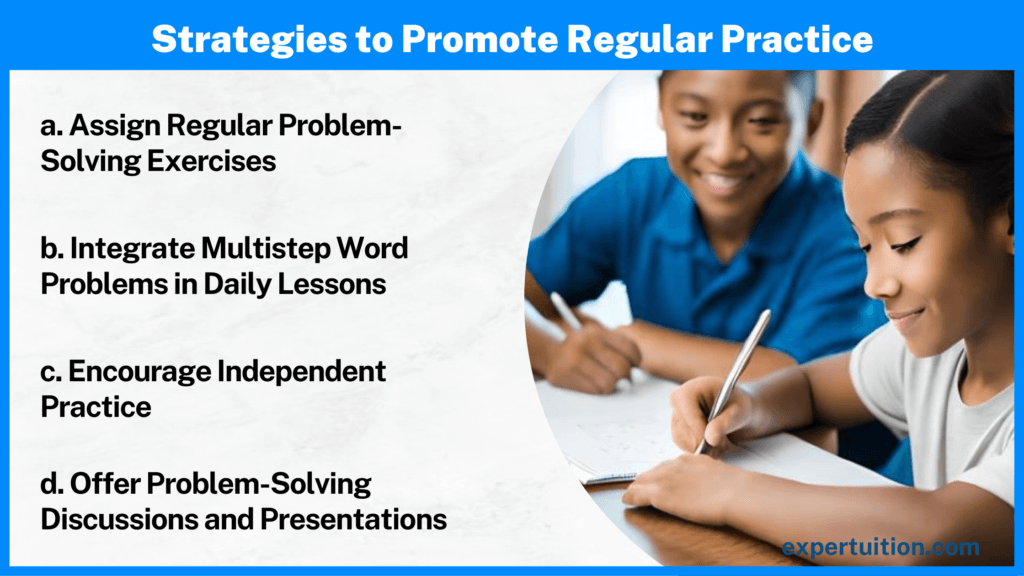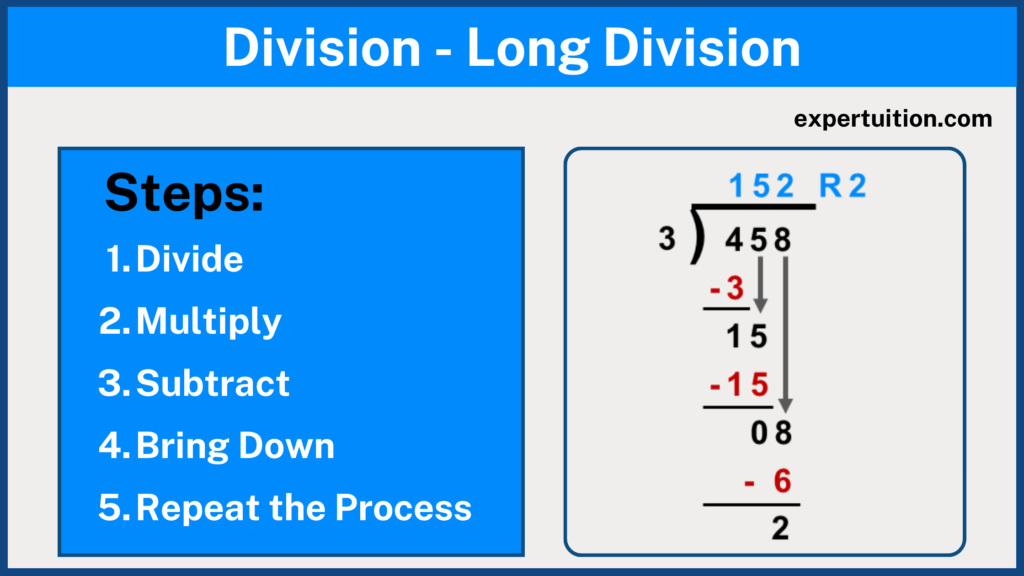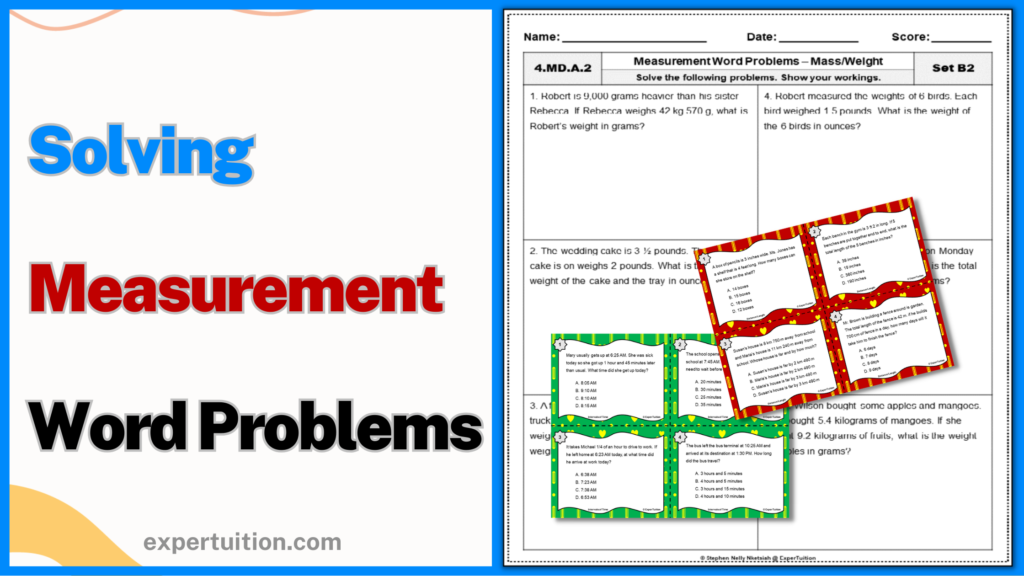
Hey there, Teacher! Are you ready to empower your students with the skills they need to conquer multi-step word problems? Look no further! This comprehensive blog post is your go-to resource for effective strategies that will transform your classroom into a problem-solving powerhouse. Let’s dive in and unleash your students’ problem-solving potential!
Word Problems
Word problems are an essential part of math education, as they help develop critical thinking and problem-solving skills.
Multi-step word problems, in particular, provide an excellent opportunity for students to apply their math skills in real-life scenarios.
Teaching students how to solve one-step word problems or multi-step word problems can be a complex task as it can be a challenging concept for most students to grasp.
However, with the right strategies and guidance, teachers can help their students become proficient problem solvers.
Strategies to Teach Multi-Step Word Problems

Now, let’s delve into the 5 strategies that teachers can employ to effectively teach multi-step word problem-solving to their students.
- Model the Problem-Solving Process
- Provide Clear Problem-Solving Strategies
- Provide Scaffolded Practice
- Differentiate Instruction
- Practice Regularly for Proficiency
Model the Problem-Solving Process
One of the most effective ways to help students understand and solve multi-step word problems is by modeling the problem-solving process.
When teachers model the steps involved in solving a problem, students can observe and learn from their thinking and approach.
This approach helps students develop a deeper understanding of the problem and the strategies required to solve it.

You can use the following approaches when modeling the problem-solving process.
- Step-by-Step Approach
- Storytelling Approach
- Real-Life Examples
Step-by-Step Approach
When modeling the problem-solving process, it is crucial to take a step-by-step approach.
Break down the problem into smaller, manageable parts, and demonstrate how to tackle each part systematically.
By breaking down the problem, students can focus on one step at a time, reducing confusion and overwhelm.
Storytelling Approach
Another effective strategy is to take a storytelling approach when presenting multi-step word problems.
Create narratives or scenarios around the problems, making them more interesting and captivating for students.
By presenting problems in a story format, students can visualize the context and relate to the characters or situations involved.
This approach enhances their problem-solving abilities and engages their imagination.
Real-Life Examples
To make the modeling process more engaging and relatable, incorporate real-life examples into the multi-step word problems.
Relating the problems to situations that students encounter in their daily lives helps them connect with the content and see the practical applications of mathematical concepts.
For instance, you can present a word problem involving shopping or calculating distances during a trip.
Provide Clear Problem-Solving Strategies
As a teacher, your role is to equip your students with effective problem-solving strategies that will empower them to confidently tackle multi-step word problems.

Here are some key multi-step problem-solving strategies to share with your students:
- Read the Problem Carefully
- Identify the Question
- Plan and Break Down the Problem
- Choose the Correct Operations
- Solve Step-by-Step
- Check and Reflect
Read the Problem Carefully
The first step in solving a multi-step word problem is to read the problem carefully.
Emphasize the importance of taking the time to understand the given information.
Encourage your students to identify the essential details, underline or highlight important numbers or quantities.
By comprehending the problem thoroughly, students will lay a strong foundation for their problem-solving journey.
Identify the Question
After understanding the given information, students should identify the question they need to answer.
Guide your students to identify the question or the unknown they need to solve.
Assist them in recognizing what information is missing and what they are being asked to find.
Encourage them to clearly define the question to maintain focus and direction throughout the problem-solving process.
Plan and Break Down the Problem
Teach your students to develop a plan and break down the problem into smaller, more manageable steps.
By doing so, they can avoid feeling overwhelmed by the complexity of multi-step word problems.
Discuss possible approaches, such as drawing diagrams, making tables, or using equations.
By having a plan in place or by creating a roadmap for the problem-solving journey, students can proceed with confidence and avoid making unnecessary mistakes.
Choose the Correct Operations
Guide your students in choosing the correct operations or mathematical strategies for each step of the problem.
Help them consider the problem’s context and the relationships between different quantities.
By selecting the appropriate operations, such as addition, subtraction, multiplication, or division, students can accurately solve each component of the multi-step word problem.
Solve Step-by-Step
Encourage your students to solve the problem step-by-step, following the plan they devised earlier.
By solving each step individually and linking them together, students can see the overall problem as a series of interconnected components, making it easier to navigate and solve.
Remind students to show their work neatly and clearly. This approach not only helps students organize their thoughts but also allows you, as their teacher, to identify any errors or misconceptions they may have.
Provide guidance and support as needed throughout their problem-solving process.
Check and Reflect
After obtaining a solution, it’s essential that students check their answer.
Teach your students the importance of checking their work and reflecting on their solution.
Encourage them to evaluate whether their answer makes sense within the context of the problem. They can do this by revisiting the original problem, reapplying the given information, and verifying if the solution satisfies the question asked.
This step promotes critical thinking and helps students identify and correct any mistakes they may have made.
Scaffolded Practice
As a teacher, it is crucial to provide scaffolded practice to support your students in mastering multi-step word problems.
Scaffolded practice involves breaking down the problem-solving process into smaller, manageable steps and gradually increasing the complexity of the problems.
This approach allows students to build their skills incrementally and gain confidence as they progress.

Here are some strategies to implement scaffolded practice:
- Start with Simple Problems
- Provide Guided Practice
- Increase Complexity Gradually
- Use Visual Aids and Models
- Break Down Complex Problems
- Provide Independent Practice Opportunities
Start with Simple Problems
Begin by introducing your students to simple, one-step word problems.
These problems will help them understand the basics of problem-solving and build their confidence.
Provide clear explanations and model the problem-solving process step-by-step.
Reinforce the importance of reading the problem carefully and identifying the key information.
Provide Guided Practice
Guide your students through practice problems by solving them together as a class.
Discuss the steps involved and explain the reasoning behind each step.
Encourage students to ask questions and engage in discussions about problem-solving strategies.
Offer support and guidance as needed, ensuring that students understand each concept before moving on.
Increase Complexity Gradually
Gradually increase the complexity of the problems as your students become more comfortable with one-step word problems.
Introduce multistep word problems by adding another step or operation at a time.
Provide clear explanations of each step and emphasize the relationships between different quantities in the problem.
Encourage students to apply the problem-solving strategies they have learned.
Use Visual Aids and Models
Utilize visual aids and models to help students visualize the problem and understand the relationships between different quantities.
Use diagrams, charts, or manipulatives to represent the information given in the problem. This visual representation can enhance students’ understanding and support their problem-solving process.
Break Down Complex Problems
For complex multi-step word problems, break them down into smaller components.
Guide students through each step, explaining the rationale behind each operation and encouraging them to show their work.
This step-by-step approach helps students tackle complex problems more effectively and reduces feelings of overwhelm.
Provide Independent Practice Opportunities
Offer opportunities for students to practice independently.
Provide worksheets or online resources that offer a range of multi-step word problems at various difficulty levels.
Encourage students to work through the problems on their own, applying the strategies they have learned. Offer feedback and support as they progress.
Differentiate Instruction
As a teacher, it is essential to differentiate your instruction to meet the diverse needs of your students.
Differentiation allows you to tailor your teaching methods, materials, and assessments to accommodate the individual learning styles, abilities, and interests of your students.

Here are some strategies for differentiating instruction in multi-step word problem-solving:
- Assess Readiness and Grouping
- Offer Multiple Problem-Solving Approaches
- Vary the Level of Difficulty
- Flexible Grouping Strategies
- Accommodations and Supports
- Formative Assessments and Feedback
Assess Readiness and Grouping
Assess the readiness of your students by evaluating their prior knowledge and skills related to multi-step word problems.
Group students based on their readiness levels, whether they require additional support or enrichment.
Provide targeted instruction and resources to address the specific needs of each group.
Offer Multiple Problem-Solving Approaches
Recognize that students have different learning styles and preferences.
Offer a variety of problem-solving approaches to cater to their individual needs.
Provide visual representations, manipulatives, or verbal explanations to support visual, kinesthetic, or auditory learners.
Allow students to choose the method that best suits their learning style.
Vary the Level of Difficulty
Recognize that students have different levels of proficiency in problem-solving.
Differentiate the level of difficulty in the problems you assign.
Provide additional challenge problems for high-achieving students and offer extra support or modified problems for those who may struggle.
Adjust the complexity of the problems to ensure that each student is appropriately challenged.
Flexible Grouping Strategies
Implement flexible grouping strategies to allow students to learn from and support each other.
Arrange students in pairs or small groups based on their strengths and weaknesses.
Encourage collaborative problem-solving activities where students can share their strategies, explain their thinking, and learn from their peers.
Offer opportunities for peer tutoring or mentoring.
Accommodations and Supports
Recognize the diverse needs of students with learning disabilities or English language learners.
Provide accommodations and support to ensure their understanding and success.
Adapt the materials, provide visual cues or graphic organizers, offer additional time, or provide translated resources when necessary.
Collaborate with special education or language support specialists to address individual needs effectively.
Formative Assessments and Feedback
Use formative assessments to gather ongoing feedback on students’ progress in multi-step word problem-solving.
Monitor their understanding, identify misconceptions, and provide timely feedback. Offer specific guidance and support based on individual needs.
Encourage students to reflect on their problem-solving strategies and provide self-assessment opportunities.
Practice Multi-Step Word Problems Regularly for Proficiency
It is important to emphasize the value of regular practice to help your students achieve proficiency in solving multi-step word problems.
Consistent practice not only reinforces problem-solving strategies and concepts but also builds confidence and fluency in applying them.

Here are some strategies to promote regular practice:
- Assign Regular Problem-Solving Exercises
- Integrate Multistep Word Problems in Daily Lessons
- Encourage Independent Practice
- Offer Problem-Solving Discussions and Presentations
Assign Regular Problem-Solving Exercises
Assign regular problem-solving exercises as part of your students’ homework or in-class activities.
Provide a variety of multi-step word problems that cover different mathematical concepts and real-life scenarios.
Gradually increase the difficulty level of the problems to challenge your students and foster their growth.
Integrate Multi-Step Word Problems in Daily Lessons
Incorporate multi-step word problems into your daily math lessons. Introduce them as real-world applications of the mathematical concepts you are teaching.
Show your students how these problems relate to their everyday lives and the importance of problem-solving skills in various contexts.
Inspire active participation and engagement during problem-solving activities.
Encourage Independent Practice of Multi-Step Word Problems

Encourage your students to practice independently outside of class.
Recommend math resources, such as textbooks, workbooks, or online platforms, that provide additional multi-step word problems for practice.
Encourage them to set aside dedicated time each week to work on problem-solving skills.
Remind them of the benefits of consistent practice in building proficiency.
Offer Problem-Solving Discussions and Presentations

Create opportunities for students to present and discuss their problem-solving strategies with the class.
Encourage them to explain their thinking, justify their solutions, and engage in constructive discussions.
This not only enhances their communication skills but also exposes them to different problem-solving approaches and fosters a collaborative learning environment.
Recommended Materials for Multi-Step Word Problems Practice

To enhance your students’ practice in solving multi-step word problems, consider incorporating the following recommended materials:
- Math Workbooks
- Online Problem-Solving Platforms
- Math Games and Activities
- Task Cards and Worksheets
Math Workbooks
Math workbooks provide a structured approach to practicing multi-step word problems.
Look for workbooks that specifically focus on problem-solving skills and offer a variety of problem types and difficulty levels.
These workbooks typically include step-by-step explanations and examples, providing students with opportunities to apply their problem-solving strategies independently.
Encourage your students to work through the problems in the workbooks, highlighting the importance of showing their work and explaining their reasoning.
You can assign specific pages or problem sets from the workbook as part of their regular practice routine.
Online Problem-Solving Platforms
Leverage the power of technology by using online problem-solving platforms.
These platforms offer interactive multi-step word problems that engage students and provide immediate feedback.
Look for platforms that align with your curriculum and allow you to track students’ progress.
Online problem-solving platforms often provide a range of difficulty levels and adaptive features that adjust the complexity of the problems based on individual performance.
Encourage your students to explore these platforms during their independent practice time or assign specific problems for them to solve online.
Math Games and Activities
Engage your students in learning through math games and activities.
These interactive and hands-on experiences make practice enjoyable and foster a positive attitude towards problem-solving.
Look for math games and activities that specifically focus on multi-step word problems.
You can create your own games using task cards or find existing games that align with your curriculum.
Set up problem-solving stations where students rotate and solve different multi-step word problems in a game format.
These activities promote collaboration, critical thinking, and a deeper understanding of problem-solving strategies.
Task Cards and Worksheets
Task cards and worksheets provide targeted practice opportunities for multi-step word problems.
While worksheets offer a collection of problems on a single sheet, task cards typically consist of individual problems on small cards.
These resources allow for flexibility in assigning practice and can be tailored to the specific needs of your students.
Select task cards or worksheets that align with the topics and skills you want your students to practice.
Consider using a variety of formats, such as multiple-choice, open-ended, or guided questions, to cater to different learning preferences.
Provide clear instructions and encourage students to work through the problems independently or in small groups.
If you’re looking for engaging worksheets and task cards for multi-step word problems to use with your students, then my differentiated worksheets and task cards will be a perfect fit for you. You can find them at my resources stores below:
Conclusion
Congratulations, teachers! You have now equipped yourself with a toolkit of effective strategies and resources to teach multi-step word problems with confidence.
By providing clear problem-solving strategies, implementing scaffolded practice, differentiating your instruction, and promoting regular practice, you are setting your students up for success.
Embrace the journey of teaching and learning multi-step word problems, celebrate the progress of your students, and watch as they develop into proficient problem solvers.
Remember, with your guidance and support, their potential knows no bounds!

Multistep Word Problems – FAQs
What are two-step and multi-step problems?
Two-step and multi-step problems are types of word problems that require multiple mathematical operations to be performed to find the solution. In two-step problems, students need to apply two operations, such as addition and subtraction or multiplication and division, to solve the problem. Multi-step problems may involve more than two operations and often require students to perform a series of steps to arrive at the final answer.
Why Are Multi-Step Word Problems So Important?
Multi-step word problems are important because they reflect real-world situations that students may encounter in their daily lives. By solving these problems, students develop critical thinking, analytical reasoning, and problem-solving skills. Multi-step word problems also help students apply mathematical concepts in context, promoting a deeper understanding of the subject matter.
Why do students struggle with multi-step word problems?
Students often struggle with multi-step word problems due to several reasons. First, these problems require higher-level thinking skills, such as analyzing and synthesizing information. Second, students may find it challenging to identify the relevant information and determine which operations to use. Additionally, students may struggle with organizing their thoughts and applying problem-solving strategies effectively.
What are the common errors in solving multi-step word problems?
Common errors in solving multi-step word problems include:
- Misinterpreting the problem: Failing to understand the problem correctly and misidentifying the key information.
- Incorrect selection of operations: Choosing the wrong operations or using them in the wrong order.
- Calculation errors: Making mistakes in performing arithmetic calculations.
- Forgetting to check the answer: Neglecting to verify if the solution aligns with the question asked and the context of the problem.


